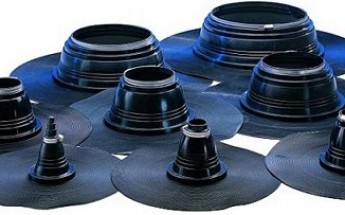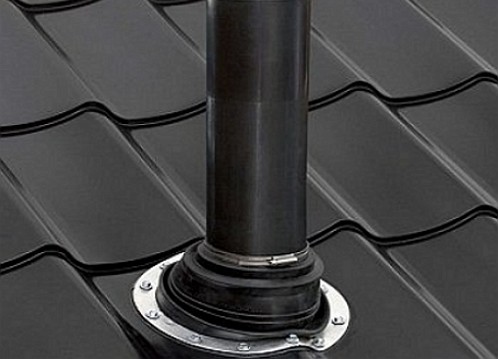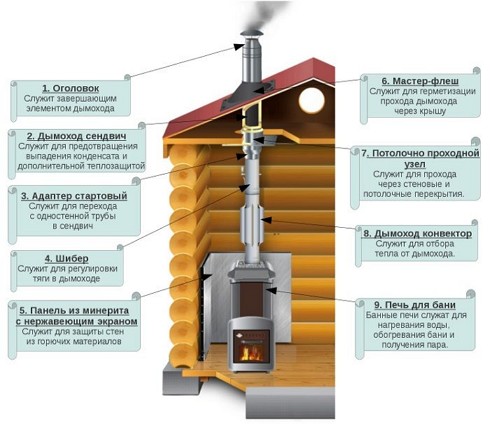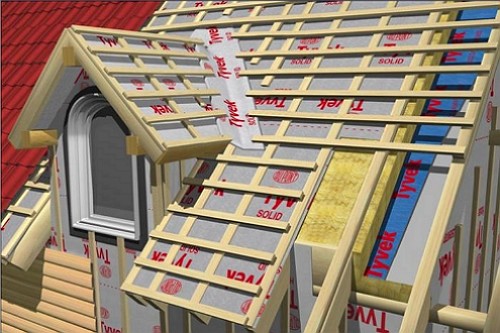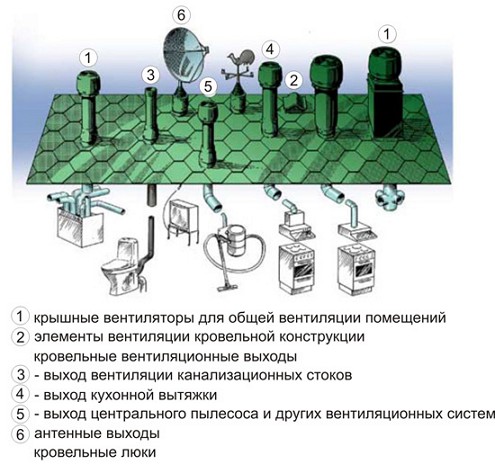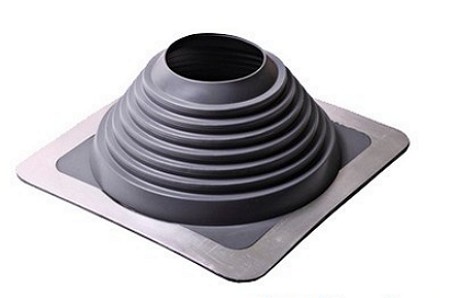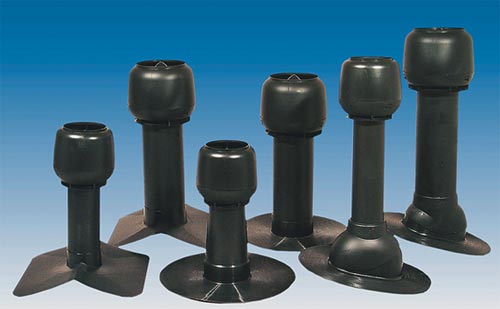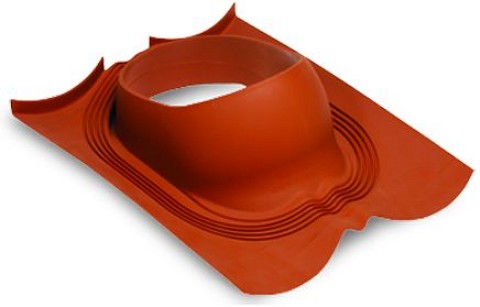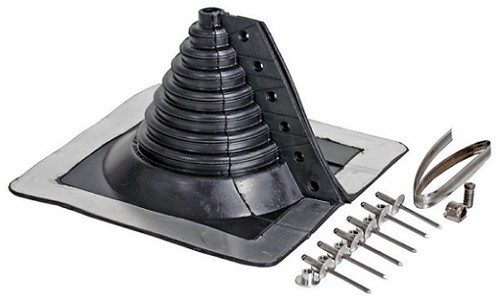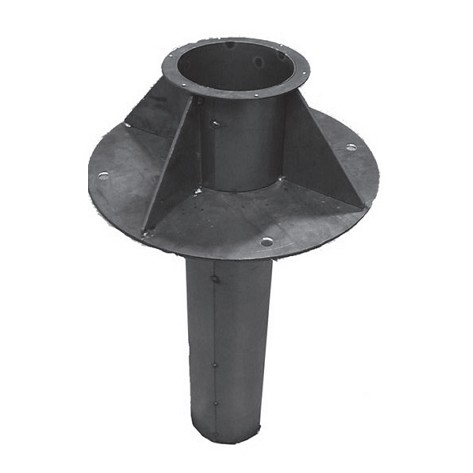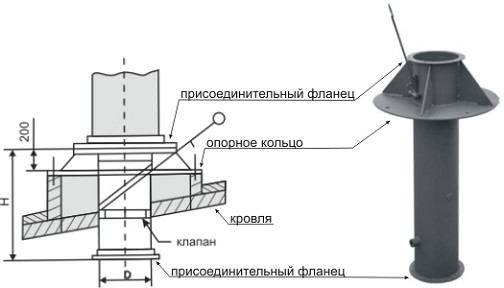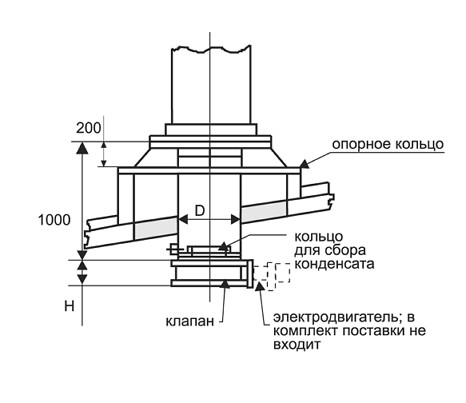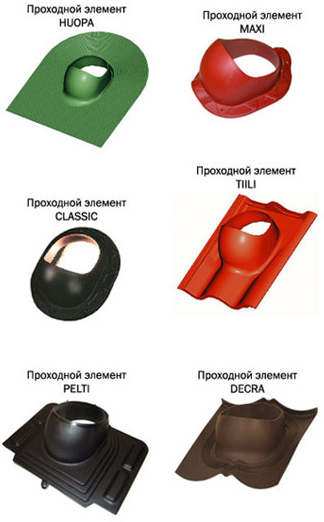Actual at all seasons, the issue of sealing the roof joints was solved with the use of improvised means. Until as long as the roof manufacturers did not offer unified roofing passage nodes. How can I make a roof passage myself?
Content
Roof penetration: purpose and principles of organization
purpose of roofing
At the stage of the roof project, it is necessary to provide a process passage for the installation of ventilation shafts, chimneys and the organization of other installation outlets. Therefore, to ensure a high-quality sealing roof use a roofing passage.
What is a roofing, and for what purpose is it intended? By and large, the roofing is designed to bring the ventilation system of the house to the roof. This creates optimal conditions for improving the quality of air in any living space. Roof passage is installed for ventilation systems, which use:
• natural ventilation
• forced ventilation system.
In which cases is it expedient to arrange a node of passage? The node of the passage through the roof is arranged in the following cases:
• at the major repair of the roof, which resulted in the replacement of the outer covering
• when replacing the heat source, including the heating boiler and the fireplace
• When installing a new roofing system.
According to their functional purpose, roofing can work:
• ventilation elements of roofing structures
• output of kitchen hoods for general use
• ventilation exits of existing sewage
• Roof fans of general purpose
• Antenna outputs.
principle of roof penetration
The general principle of the organization of roofing penetrations is the same and is the creation of a technological hole in the roof with the subsequent installation of the passage assembly.
In the process of making roof penetrations with your own hands, you must remember the following parameters:
• angle of the roof
• height of interstitial space
• material for the manufacture of roof trusses and roofing.
It is necessary to distinguish the following types and methods of mounting roofing penetrations, which depend on the shape of the passage, as well as the existing roofing material. There are roofing penetrations of the following types:
• straight roofing
• roofing penetration angular
• Roof penetration Master Flash.
Elements of penetrating the roofing line are used in the case of flat or low-sloped roofs (angle of slope less than 25 degrees). The diameter of pipes of round form of penetrating the roofing line can be from 10 to 1000 mm. Intended for penetration for ventilation systems, electrical and television cables.
Roof penetration corner and its elements are used for ventilation when installing chimneys, ventilation systems of rooms and electrical outlets. The main element of the passage assembly is a flange located at a certain angle to the base. For pitched roofs with a slope angle of more than 25 degrees, the working angle of the node of the passage is about 20 degrees. The diameter of the pipes of angular penetration lies in the range from 75 to 460 mm.
A modern solution to the problem of sealing chimneys is the use of penetration roofing Master Flash. The effectiveness of the sealing system Master Flush is provided by using a special clamp and rivets supplied by the manufacturer in the delivery package.
What is the design of the passage assembly
The construction of the passage assembly can be considered standard. The design consists in installation in the prepared hole of a metal pipe. The metal pipe is installed on the roof or reinforced concrete beaker, which is fastened to by means of anchors with subsequent concreting.
For the device of a roofing passage plates with ready openings (apertures) under a knot are used. Locations of the nodes of the passage are specified at the design stage. The design of the access node depends on the type of roof: straight or sloping.
The nodes of the passage are divided into types:
• with control valves
• Without the presence of a manual control valve.
Opening and closing of valves is carried out at the expense of the control mechanism.
The nodes of the passage are made of ferrous metals with subsequent coating with heat-resistant enamel. Finished structures of the passage assembly are able to withstand a significant temperature. For a soft roof, the use of galvanized steel construction is allowed.
Types and methods of installation of penetrations of roofing
The most common type of roofing is the passage of the chimney or pipes through the roof.
chimney duct passage through the roof
The organization of the passage through the roof of the chimney pipe depends on the material of the chimney and its section.
The shape of the chimney section can be:
• Round
• Square
• Rectangular.
There are many forms of passage elements designed to organize the passage.
When installing the roofing of the chimney pipe, it is recommended to use a separate box. Installation of rafters and beams of the roof structure, in this case, is recommended in accordance with building codes and regulations. To seal the passage of the chimney through the roof, preference is best given to the master flush.
Roof penetrations Master Flash is a device as a single element of elastic EPDM rubber or silicone. On the back of the device there are grooves to be filled with sealant. The passage has the following colors: black, brown, red, green and silver. How to make the roof sealing using the penetration of this kind of video will help you.


